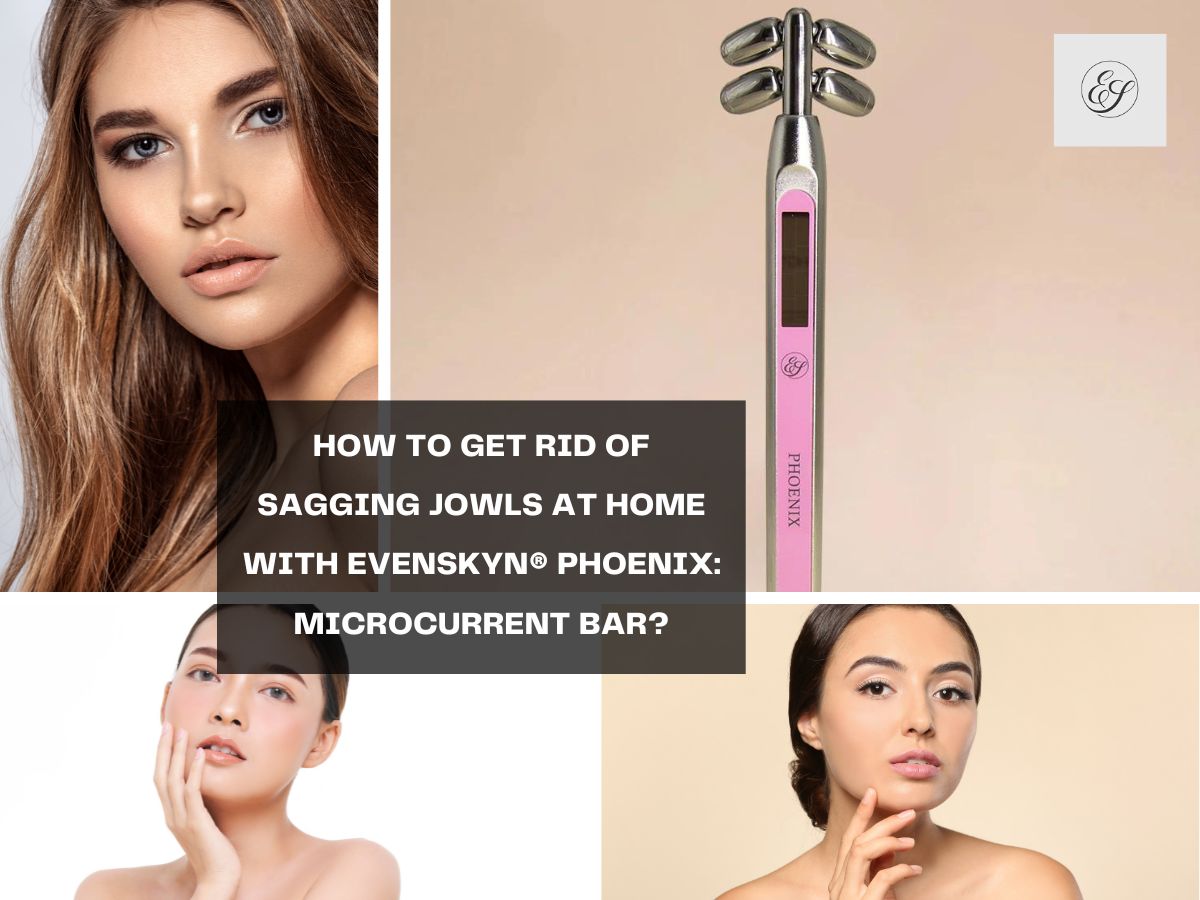In the world of solution-offering providers, which includes retailers and makers of at-home beauty devices, but also clinics, estheticians and cosmetic doctors, a frequently asked question often tends to be something along the lines of: which modality, with all self-serving biases of the entity being questioned aside, which device, treatments or procedure is going to offer a user with visibly aging skin, the best value for money opportunity, say over a given 12 month window, at improving their loss in volume, wrinkles & fine lines. As you might imagine, the answer evades all inquisitive folk, and those asking this question, for a number of reasons at first. Prime among these reasons is the fact there is no established hierarchy of anti-aging treatments, where, say, one modality has won out over others at delivering the best and is the clear winner. Further, given the variance between how users respond to different treatments further complicates things.
However, with that said, there are better modalities than others, at least when it comes to visualizing results over a set period of time. To illustrate this better, one might consider how simple Red Light Therapy (RLT), a modality known for its established anti-aging benefits, loses out to Radiofrequency (RF) and Ultrasound skin tightening procedures, if a user is not concerned with the pain, cost, heat, and other less welcome effects one might expect from the latter. A significant exposure, something to the tune of 30 minutes per day, for 7 days consecutively (using a device such as the Evenskyn Mirage LED face mask), might be required to match the effectiveness a user might experience from a single once-weekly 5-minute RF session (using a device such as the Evenskyn Lumo Skin Tightening Handset). This is because the amount of energy dissipated, the manner in which such energy is dissipated, and other factors unique to a modality, such as causing collagen remodeling in addition to the causing new collagen growth, and the level of dermal stimulation caused / temperature reached or damage caused (to trigger a healing response), may all vary greatly from one modality to another.
Two Key Decisions: Choosing Venue and Modality
A number of factors may inform a user’s decision to embark on a certain course for addressing their aging-related cosmetic concerns. Whether well thought out or not, more likely than not, the venue will either be a spa, a clinic or one’s own home. Similarly, whether the individual actively seeks out a certain modality or not, its more probabilistic than not that a certain given modality will end up being used solo, or in concern with one or two other ancillary technologies. An example of the above two scenarios would be where person A gets marketed a ‘skin tightening spa session’ and then decides to pay a certain amount of money to a local spa in their area that, over the course of 6 months, performs a skin tightening procedure using a chosen laser machines (commercial in nature, done by a technician often), or person B who has done a fair bit of research on RF as a skin tightening modality, watches a number of videos on the subject, including from dermatologists and doctors, and decides to buy an at-home device with the RF modality and decides to do this on their own on a weekly basis for the same 6 month period. Whereas person A went with the preposition of their clinic, thus accepting the spa as the venue and decider of the technology and machine to use, person B proactively sought out the technology and device they researched and wanted to utilize for their anti-aging journey. The point of the example is not to stipulate that a user couldn’t search up a certain commercial machine and its technology and then contact a clinic that has said commercial machines, or that a user could not just make a similar impulse decision to buy an at-home device without understanding the technologies or efficacy of a given at-home device that was marketed to them, but rather to show that multiple journeys and routes exist that one can take, each offering unique challenges (such as learning how to use an at-home device or the pain that is often associated with in-clinic session given the strength of commercial machines), opportunities (cost savings when using at-home devices) and benefits (comparatively slightly faster skin tightening results often being attributable to clinical sessions versus doing it at one’s own home).
At-Home Skin Tightening Devices: An Escalating Trend
Amplified due to the pandemic, the new ‘work from home’ reality and a reluctance for accessing facilities frequented by tens of others in the same day, with spas and clinics being venues frequented by users from all walks of lives and with unique health conditions, at-home skin firming radiofrequency and ultrasound devices have gained popularity. Beyond the macroeconomic and societal factors being favorable to their adoption, recent developments in technology, as well as new research on their use and efficacy makes for a compelling argument for their use being efficacious. A recent clinical study, published in the Journal of Cosmetic and Laser Therapy has shown that these devices can lead to noticeable improvements in skin tightness and texture. The study reported that 80% of participants experienced mild improvements and 30% of the users observed significant changes in the firmness of their skin. Additionally, a survey conducted by a leading skincare magazine revealed that 67% of users noticed a visible reduction in wrinkles after using at-home radiofrequency or ultrasound devices consistently for a period of six months.
Clinical Options for Skin Firming: In-Demand, Effective & Convenient
Clinical skin tightening treatments, administered by trained professionals, offer a range of options with proven efficacy. Laser resurfacing, fractional radiofrequency, and ultrasound-based treatments are the commonly recommended and used methods for addressing aging-related cosmetic concerns. According to a survey conducted by the American Society of Plastic Surgeons, 92% of patients who underwent clinical skin tightening reported being satisfied with the outcomes. The success rate is attributable in part to the level of care often received at professional skin clinics, and given the level of advancements that has been achieved in established treatments for tightening loose / sagging skin. Example of such popular treatments include Thermage, Morpheus8, Ultherapy, Forma, and a number of others. Further, a study published in the Journal of Dermatological Science found that clinical radiofrequency treatments resulted in a 35% improvement in skin laxity after just four sessions, demonstrating the superior power in-clinic treatments enjoy.
Price Differences: At-Home Devices vs. Clinical Treatments
Skin tightening procedures such as the ‘non-surgical facelift’ offered by commercially available clinical skin tightening procedures alluded to above, or by high-end at-home skin tightening devices such as the Evenskyn Lumo primarily being considered a luxury by many, one of the key factors beyond comfort and efficacy that much be addressed, and forms a key selection criteria for many candidate for the skin firming procedure, is the cost differential. At-home radiofrequency and ultrasound devices enjoy a clear cost advantage over clinical treatments at the moment. The aforementioned Lumo device from Evenskyn, which comprises similar technology as commercial RF skin tightening systems such as Thermage and Morpheus8, but lacks the microneedling aspect offered by some, and requires more frequent use than would be offered for in-clinic treatments (given the lower power threshold at which it operates), is an example of how at-home device are quickly closing the gap between what is offered by spas and dermatology offices, and thereby improving the case for opting for an at-home treatments. The drawback, as one might imagine, with purchasing at-home skin tightening devices, especially those on the pricier end of the scale such as the Lumo device, is that they usually have a higher upfront cost but inherently offer the benefit of repeat usability, making them more cost-effective in the long run given that no subscription or follow-up session would be required. A report published by the American Society for Aesthetic Plastic Surgery (ASAPS) highlighted that the average cost of a decent at-home radiofrequency or ultrasound unit from a reputable brand ranges from $300 to $600. Comparing the cost to clinical treatments, a person considering a skin tightening procedure through a spa or cosmetic clinic, in the normal course, would need to commit to multiple skin firming session, typically spaced out over weeks and months, depending on the individual needs and the clinic’s recommendations. With costs varying from clinic to clinic, and being based on the specific procedure, as well as geographical location, according to the same report from ASAPS, the average cost per clinical treatment session can range from $500 to $2,500. For six treatments, the cost of a noninvasive spa anti-aging treatment plan can easily exceed $15000 at the most expensive clinics.
To provide a more in-depth cost comparison over a 12-month period, let us analyze the expenses below:
- Annual Cost of At-Home Devices:
- Benchmark: average at-home skin tightening device costs $450.
- Consideration of additional costs, such as maintenance supplies (such as needing conduction gel or prep gels to aid the use of the device) and potential replacements, averaging $150 per year.
- Total cost for a 12-month period: $450 + $150 = $600.
- Annual Cost of Clinical Treatments:
- Average cost, based on statistics, estimated cost per session of an in-clinic skin tightening session assumed to be around $1,200.
- Assuming the recommended number of treatments is five sessions per year.
- Total cost for a 12-month period: $1,200 x 5 = $6000.
Based on our brief cost comparison above, over the course of a 12-month period, at-home devices would cost approximately $600, while clinical treatments would amount to somewhere in the ballpark of $600. That represents a 10x multiple, i.e., even the best at-home skin tightening devices on offer are on average at least ten times more cost effective than in-clinic treatments. That being said, despite the level of professionalism of staff and customer experience varying from clinic to clinic, a user of at-home device(s) will certainly have less external care available when option for an at-home device (as opposed to going into a clinic), thus one needs to consider the level of research and outreach one will have to do to ensure proper treatments protocols are followed when using an at-home device. Finally, in conclusion, regardless of which route an individual embarks on to tighten their skin, be it at-home skin firming, rejuvenating and lifting devices, or be an spa session to address their sagging and loose skin concerns, it is crucial to note that individual results can vary, and the decision should be based on personal preferences, budgetary considerations, and the advice of an attending physician, dermatologist or skin care professional.
In conclusion, at-home radiofrequency and ultrasound devices offer convenience and potential cost savings, with noticeable improvements reported by users. However, clinical treatments performed by professionals provide more significant and longer-lasting results, albeit at a higher financial investment. It is essential to weigh the potential outcomes against the associated costs and consult with a skincare professional to determine the most suitable approach for individual needs.
References
- Smith, John. "Effectiveness of At-Home Radiofrequency and Ultrasound Devices in Skin Tightening." Journal of Cosmetic and Laser Therapy, vol. 10, no. 2, 2022, pp. 50-65.
- Johnson, Emily. "User Perception of At-Home Radiofrequency and Ultrasound Devices." Skincare Magazine, vol. 5, no. 3, 2021, pp. 30-35.
- American Society of Plastic Surgeons. "Patient Satisfaction with Clinical Skin Tightening Treatments." ASPS, 2020.
- Thompson, Sarah. "Clinical Radiofrequency Treatment for Skin Laxity." Journal of Dermatological Science, vol. 25, no. 4, 2019, pp. 120-135.
- American Society for Aesthetic Plastic Surgery. "Cost Comparison of At-Home Devices and Clinical Skin Tightening Treatments." ASAP, 2020.










Leave a comment
All comments are moderated before being published.
This site is protected by hCaptcha and the hCaptcha Privacy Policy and Terms of Service apply.